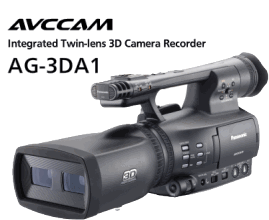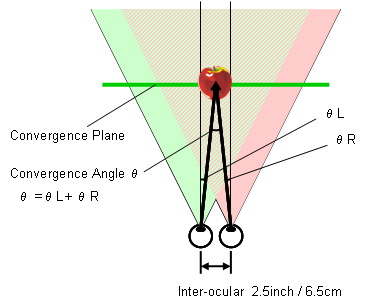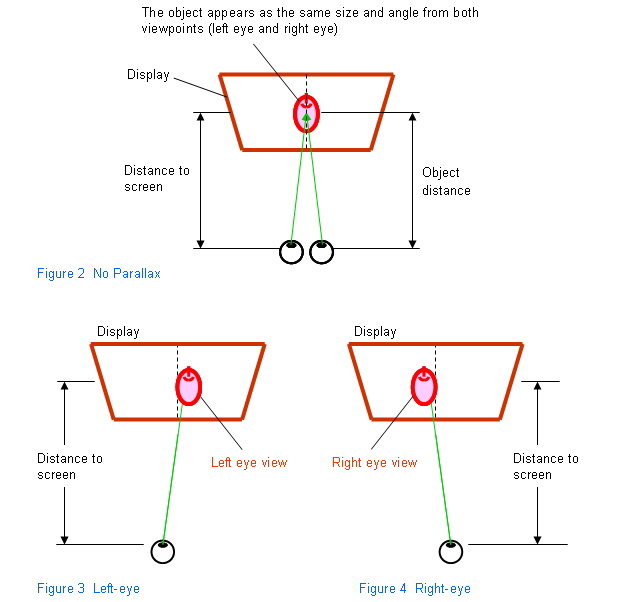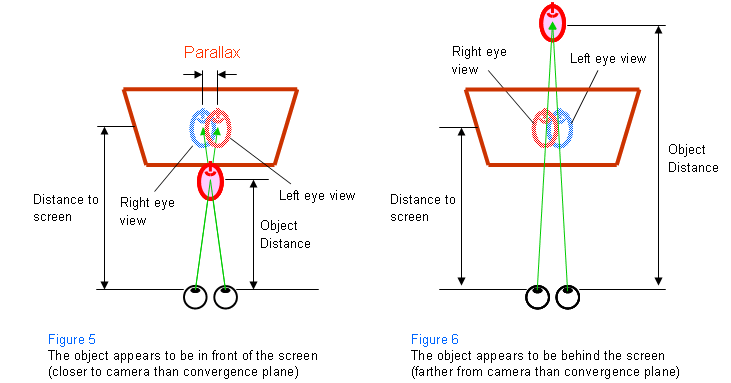 3D BASICS #1 AG-3DA1 Integrated twin-lens camera recorder Movie companies and content producers are eager to produce more 3D content. 3D video is set to become a mainstream motion picture technology. Currently, producing 3D movies is a painstaking process. Panasonic intends to promote the production of high-quality 3D video content by accelerating the development of 3D video production systems designed to boost production speed and efficiency.  The AG-3DA1 is the world's first professional, fully-integrated twin-lens
camera recorder that records to SD card media. Current 3D systems are large-scale
setups in which two cameras are fitted to a rig in parallel, or vertically
intersect across a half-mirror. Separate recorders are also required. The AG-3DA1 is the world's first professional, fully-integrated twin-lens
camera recorder that records to SD card media. Current 3D systems are large-scale
setups in which two cameras are fitted to a rig in parallel, or vertically
intersect across a half-mirror. Separate recorders are also required. In Panasonic's new AG-3DA1 camera recorder, the lenses, camera head, and a dual Memory Card recorder are integrated into a single compact housing. The AG-3DA1 allows video shooting with greater mobility and at a much lower price than the traditional 3D camera systems. How does 3D video work? Visual Disparity Creates a 3-Dimensional Effect When people look at something, they receive slightly different images from their left and right eyes. The difference between the two images is called "disparity." When the images are formed into a single image by the brain, this disparity causes the appearance of spatial depth and the appearance of solidity. The basic principle of 3D images derives from purposely creating this visual disparity. Even though the image is projected onto a flat screen, the viewer's brain interprets the visual disparity information as portraying depth and solid-appearing objects. When we look at objects with both eyes, the perspective in each eye is slightly different due to the distance between the eyes (inter-ocular distance, approx 2.5inch / 6.5cm in adult). This perspective difference is called "Parallax (binocular parallax)". In addition, the angle of the eyes varies depends on the distance to the objects. The angle (θ), which can be measured in the fig.1 is called "Convergence angle". When viewing nearby objects, the convergence angle (θ in fig.1) becomes wider, and narrows when looking at far away objects. Our brain recognizes depth and distance of the subject and perceives the solidity of the subject by combining and processing the images captured by each eye.  Figure 1 Convergence angle Fig.2 shows the case with no parallax, viewing with left and right eyes. Fig.3 and .4 show the cases when parallax can be seen in each left and right eye.  As shown in fig.5, the object appears to be in front of the screen when seeing a stereo image with parallax. In addition, when parallax is made in the opposite direction, the objects appear to be behind the screen (fig.6).  The AG-3DA1 can acquire natural 3D images, thanks to its twin-lens system featuring parallax control and convergence adjustment system.  |
||||